Adding Style To The Shop
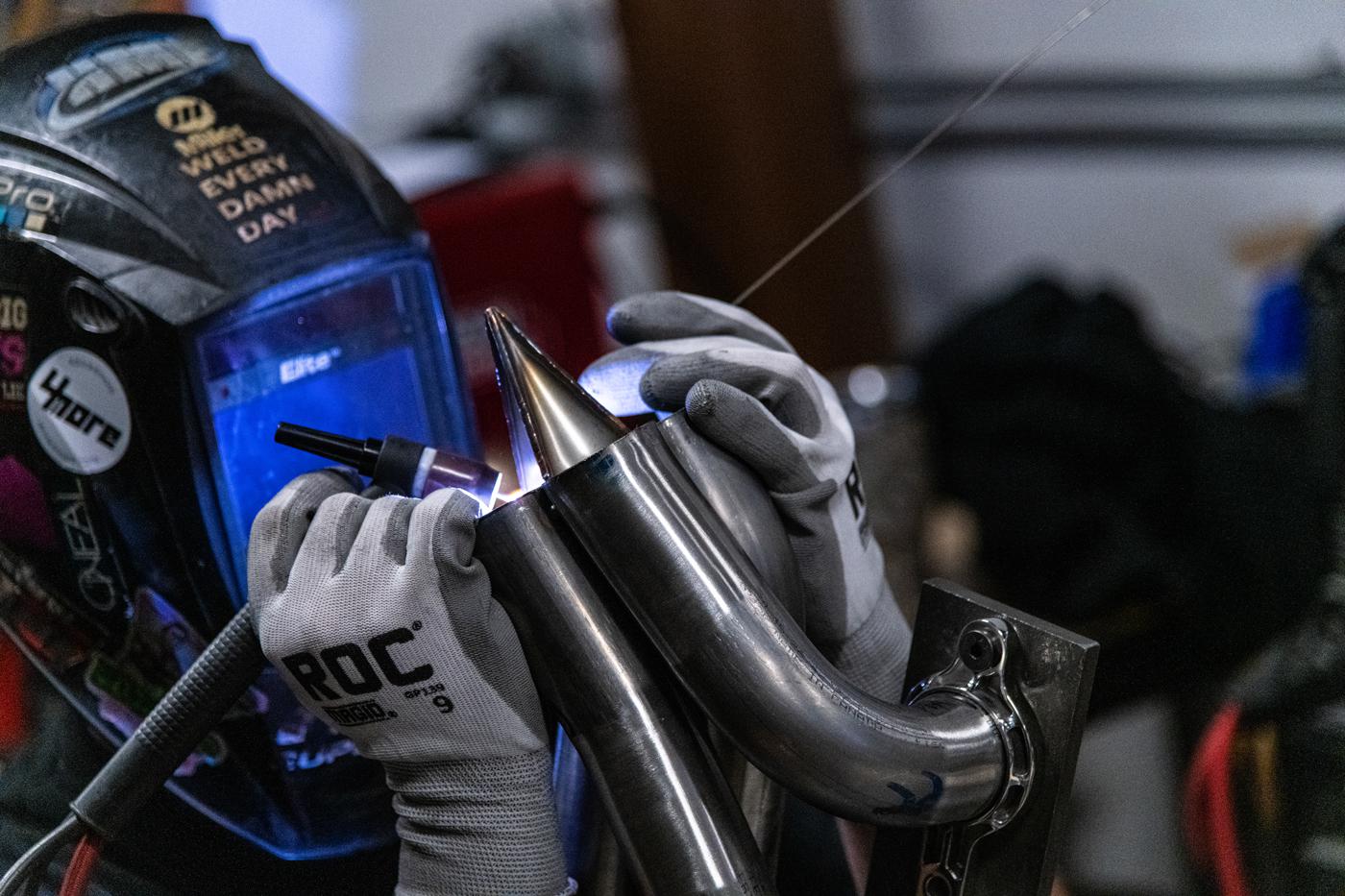
Suppliers are producing PPE for engine builders, fabricators, machine operators, and more that incorporate form and function in line with expectations for performance and a professional appearance.
Professionalism is more than simply doing the job right—it’s about looking the part, too. Even old-school engine builders got the message early on and can be seen in vintage photos with monogramed button-down shirts, or at least T-shirts with a classy logo. Race teams also learned long ago that colorful pit uniforms draw fans and have a positive impact on sponsors seeking brand promotion.
That trend is now crossing over into personal protective equipment (PPE) for the shop.
“Style absolutely comes into play,” said Chase Rutti of Lincoln Electric, Cleveland, Ohio, which offers protective jackets, headgear, and gloves designed just for welders. “Ultimately, welding PPE is a personal protective product, and the key word there is personal. If you look back 15 years, pretty much all welding PPE was green, because that was the natural color of that fabric, and style was not considered. As the workspace has progressed, style has come into play.”
Leveraging his background in graphic design and print-shop experience in addition to being a fabricator, Justin Voss of Defiant Metal in Las Vegas, Nevada, has designed welding gloves with a distinct style because personal image is becoming more important to workers in this segment.
“I wanted to make gloves with more form, as well as function,” he said. “I don’t feel that exists right now. More people are just making PPE and that’s it. I’m trying to add style and also make high-quality gear.”
Even safety eyewear is becoming more in tune with today’s latest generation of mechanics.
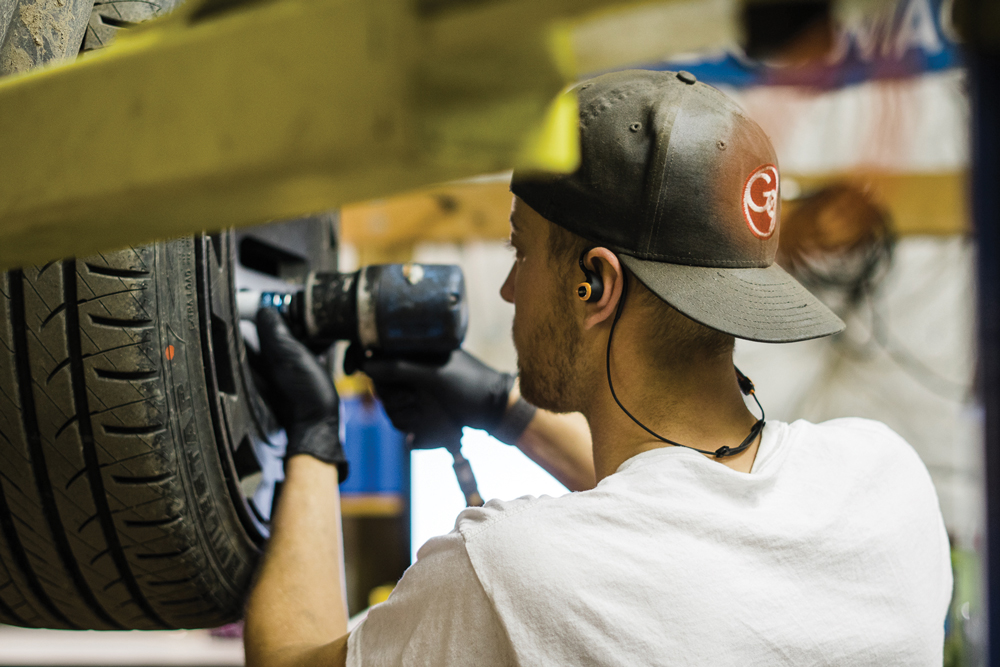
“It’s always a matter of preference and style,” said Martha Bobadilla of SAS Safety Corp., Long Beach, California, a manufacturer of disposable safety gloves and numerous other PPE items, including protective eyewear. “We always try to come out with stylish eyewear. We’re working on new designs right now because the trend is always changing. We have a younger generation that’s coming up to become mechanics, and fashion always tends to change over time.”
There are some segments of the PPE industry that serve motorsports where style isn’t a concern. Protective coveralls and respirators for painters, along with nitrile gloves, aren’t going to make fashion statements. Hearing protection is another PPE category that isn’t receiving fashion makeovers. Instead, the latest in technology and other priorities are driving new designs in earbuds for industrial and sporting applications.
“Earbuds are ultra-lightweight and will stay cool in a hot environment,” said Eric Murphy of Haven Technologies, Carmel, Indiana, the parent company of IsoTunes, a manufacturer of earbuds and other hearing-protection products. “Contrary to over-the-ear muffs, which can get pretty hot, earbuds allow the user to stay pretty cool. Also, they don’t get in the way of the user.”
Following is a sampling of PPE equipment, including protective gear for welders, ear and eye protection, disposable nitrile gloves, and shop aprons ideally suited to specific work environments.
Ear Protection
Most race shops and garages are not acoustically forgiving when it comes to loud and insufferable noises radiating off walls. The problem isn’t just open headers on a 1,500-horsepower engine. Power hammers, air compressors, grinders, impact wrenches, and the like will drive most mechanics batty in a short time if they can’t filter out loud and obnoxious racket.
Even when required by company or governmental regulations, ear protection of the past meant the venerable orange soft-foam ear plugs that are supposed to compress and then expand to the shape of the ear canal to block off noise. These work in some ears but don’t last long. The scratchy pine-tree plastic versions are more durable but don’t block much noise. Over-the-ear muffs are quite effective, yet quite cumbersome.
For years, race car drivers had custom-molded earpieces, not only to reduce outside noise but also serve as an earphone for the car radio. Now mechanics in the shop are following that same trend. The earpiece cuts down the noise levels and allows the user to listen to music or use the cell phone.
“We actually deal with a lot of race shops and machine shops,” said Ben Jones of Southern Adrenaline (SA) in Euless, Texas. “We can make a custom hearing protection that a person can wear every day.”
A representative from SA will visit a shop to capture an impression of the user’s ear. Depending on budget and time restraints, turnaround time is between a few days and three weeks. The company uses a medical-grade silicone to make the earpiece, either in a solid form for full protection or with filters to hear at a safe rate.
“We can also add audio tubes for sound,” said Jones.
The material does not change shape, so the earpieces can be worn and cleaned on a regular basis. The company also offers a number of off-the-shelf earbuds with different designs and price points. Some are electronically active and automatically cancel out sudden loud noises. Others are fitted with Bluetooth technology.
For a race shop setting, awareness of the surroundings can be critical to personal safety.
“Aware technology is a new thing that we’ve really piloted,” said Murphy. “There are two products there, Pro Aware and Free Aware. They work like a hearing aid. You’re able to hear everything around you, but then it cancels out loud impulse noise that’s over the 85-decibel threshold. It still protects your ears from harmful noise in the environment but allows you to hear what’s going on around you.”
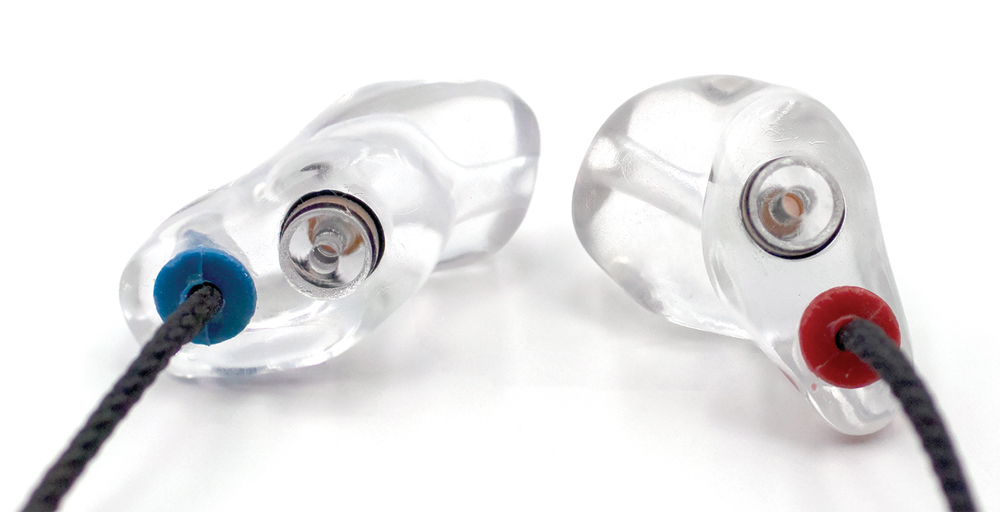
Free Aware is the cord-free version of Pro Aware and more expensive. Both are Bluetooth equipped. IsoTunes also offers Pro and Family versions without the Aware technology at a lower price point.
“Our two most popular products are from the Pro and Free families,” added Murphy. “The Pro family is designed for maximum durability, maximum battery life and maximum noise reduction. The Free family is designed to be true wireless and minimal. It’s the closest you can get to just wearing earplugs themselves.”
The Earasers motorsports hi-fi earplugs manufactured by InEarz Sport in Casselberry, Florida, are designed to provide optimum hearing protection around racing environments.
“It’s an ear filter, that’s what I like to call it,” said Martin Nardini. “It’s designed to filter the sound coming into the ear and focus on reducing noises most harmful to your ear while maintaining the ability to hear naturally, especially in the voice range.
“If you’re working in a shop and you want to tone down the loudness of the machines, you still need to be able to hear people talking to you,” continued Nardini. “You don’t want to be so shut off from the world that it hinders your ability to be safe.”
The Earasers come in four sizes to match up with a wide variety of ear canal shapes and dimensions, but the actual shape of the earplug is patented.
“The only thing you’ll find more comfortable than an Earaser is a custom-molded ear plug, which is more expensive when you’re talking about filtered ones,” said Nardini. “It originally was designed as a tip for a hearing aid, and people are wearing them for 15 hours a day, seven days a week. It basically uses a large area of contact within the ear canal to create the seal. It doesn’t press against your year, creating pressure points.”
Nardini said that decades of working in the hearing-aid industry have identified certain frequencies that are harmful to hearing, and the Earaser can control those levels using membrane filters. The earplugs are washable, and the silicone sleeve is replaceable.
“We have a number of motorcycle shops that use them already, and then a number of machine shops and manufacturing facilities,” added Nardini.
Aprons and Finger Gloves
Made in the USA is a strong selling point for many products, and Goodson Tools and Supplies, based in Winona, Minnesota, is boasting that its heavy-duty shop apron is all domestic.
“A lot of people complain they don’t want anything from China, or anything made overseas,” said Richard Orlikowski. “The material that we have is 100% USA-made for our shop apron. It’s heavy duty but made from a lighter-weight denim material that resists a lot of the oils and greases found in a shop.”
Style and fashion are design elements not usually found in a shop apron that’s constructed from a simple black denim. They’re designed to be worn in front of a Bridgeport, not a Weber grill, as there are top pockets for a micrometer or other instruments and large pockets for tools and work materials. Orlikowski said the apron is easy to clean and allows easy movement.
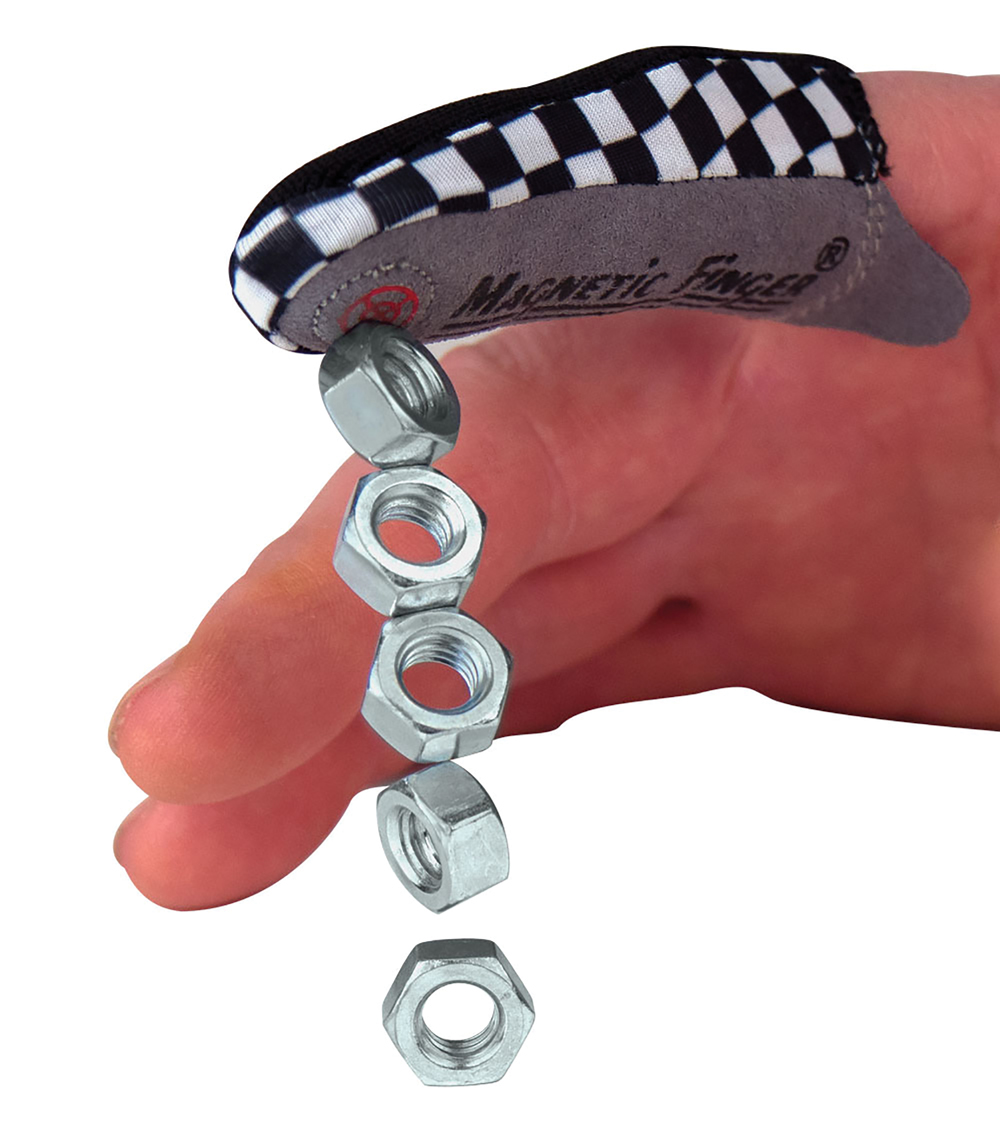
“You don’t want your shop apron too stiff to where you can’t bend over and get stuck, like with a rubber apron,” said Orlikowski, noting that this product is a perfect shop gift. “It’s flexible enough to move, to be able to bend, to get to the parts and pieces that you need.”
Goodson also offers a magnetic finger glove for mechanics working in tight quarters. “It helps when putting in valve keepers or starting a nut in a limited space,” said Orlikowski. “There’s an earth magnet right in the finger, so you can have any magnetic metal object right at the fingertip. You don’t have to worry about dropping it in an oil pan or cylinder. You can use it for installing or retrieval.”
Nitrile Gloves
Disposable rubber gloves are actually regulated by the Food and Drug Administration, so there are standards for different applications—which is helpful for the racing industry because comparisons can be made between different thicknesses and materials to suit a specific chore.
“Mechanics in motorsports want something durable. They want the gloves to hold up to the chemicals they’re working with, like gasoline, alcohol, and other fuels,” said Bill Whiting of Atlantic Safety Products, Pittsfield, New Hampshire. “Nitrile gloves vary from 2 mil to about 15 mil. What we’ve found is the right thickness is a 6 mil. That’s thick enough to where it’s going to hold up to snags and not tear. But you also don’t lose your dexterity. You can feel starting a nut or handling small items.”
Atlantic Safety Products offers four different brands of disposable gloves: Black Lightning, Red Lightning, Orange Lightning, and InTouch. All can be used by the automotive industry.
“The InTouch is a 5 mil, so it’s a little thinner and geared toward shops that maybe handle only oil or they have a lot of technicians and are trying to save a nickel,” added Whiting. The Red Lightning is an industrial glove that reduces exposure to latex allergies. The Orange Lightning is made to match the skin’s natural pH levels for improved comfort. The Black Lightning is also designed to match the skin’s pH level and has a unique formula to reduce excess perspiration.
Over at SAS, there are two brands of nitrile disposable gloves popular with the automotive industry: the 7-mil thick Raven, which is black, and the 8-mil Astro-Grip that comes in orange.
“The Raven is our number-one glove for mechanics,” said Bobadilla. “We also have the Astro-Grip that has a texture to it. If the user is handling oils or fluids, the Astro-Grip is very good for those applications.”
Welding Gloves and Jackets
“I’ve always liked the Steampunk movement because they’re very complicated mechanical structures. There’s a lot of brass and gold,” said Voss. “It’s Victorian style with mechanical engineering, and that’s always appealed to me.”
The designs behind Voss’s welding gloves at Defiant Metal clearly draw on those styling cues. The TIG gloves are made from goatskin, and the MIG gloves are made from black cow leather and brown split cowhide. Both are constructed with double-row Kevlar stitching. In addition to the bold black models, there are white and pink versions available. Youth sizes are also offered. For additional protection, single-layer Kevlar sleeves will help protect against burns and cuts.
“I mostly do TIG personally, so I have more variety in the TIG gloves,” said Voss. “Also, it’s not on the website yet, but I have a fabrication glove coming. It’s a simple glove for handling metal or other types of fabrication work. It doesn’t have any padding, and it’s more for cut resistance.”
Lincoln Electric’s extensive lineup of welding gloves offers a wide variety of colors, styles, and sizes. There are so many choices that one model is dedicated to ship building, and there are versions designed for women and stick welding.
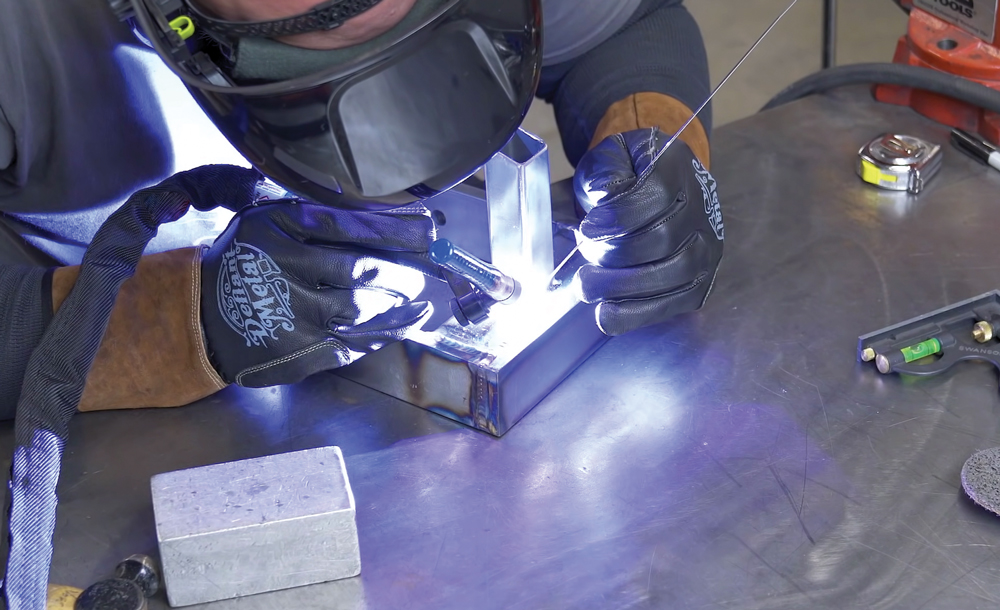
“The most applicable ones for automotive and motorsports will be the two MX series gloves. In particular, the MX series premium TIG glove,” said Rutti.
The MX series premium TIG glove is constructed with Durahide suede, top-grain cowhide and split-leather cowhide. It features Kevlar stitching and an elastic wrist band. The MX series premium MIG glove is made from Durahide cowskin leather and is both ANSI A4 cut resistant and ANSI 5 puncture resistant.
“The TIG glove will be more form fitting because it doesn’t have a liner,” noted Rutti. “The MIG glove is used with a higher amperage welding process, so it needs an inner liner to improve thermal protection.”
Lincoln Electric offers both welding jackets and protective sleeves but recommends the jacket if the sleeves are not used with a flame-retardant shirt.
“Candidly, we do see a lot of welders just wear sleeves. That is not something that we would recommend due to the potential safety concerns,” said Rutti. “A flame-retardant product is actually treated with a solution that extinguishes fire. All of our flame-retardant jackets comply with ASTM D6413, which is a FR compliance standard. The black FR K3113 welding shirt and the K2985 jacket will be the two most popular items for automotive.”
Eyewear
SAS offers a wide range of eye protection under numerous brands and lines. Some are standard safety glasses and others are in the goggle category. They’re available in numerous colors, and some are fitted with LED lights.
“All of our eyewear has an anti-fog coating and meets current ANSI Z87.1 standards for impact protection,” said Bobadilla.
Over at Lincoln Electric, numerous styles are available, including those designed for women. “I would say that for automotive, it’s not any unique variable that would drive safety glass purchases,” said Rutti. “There are different types of lenses designed for either indoors or outdoors. Normally, automotive is going to want something that’s really lightweight with anti-scratch and anti-fog coatings.”
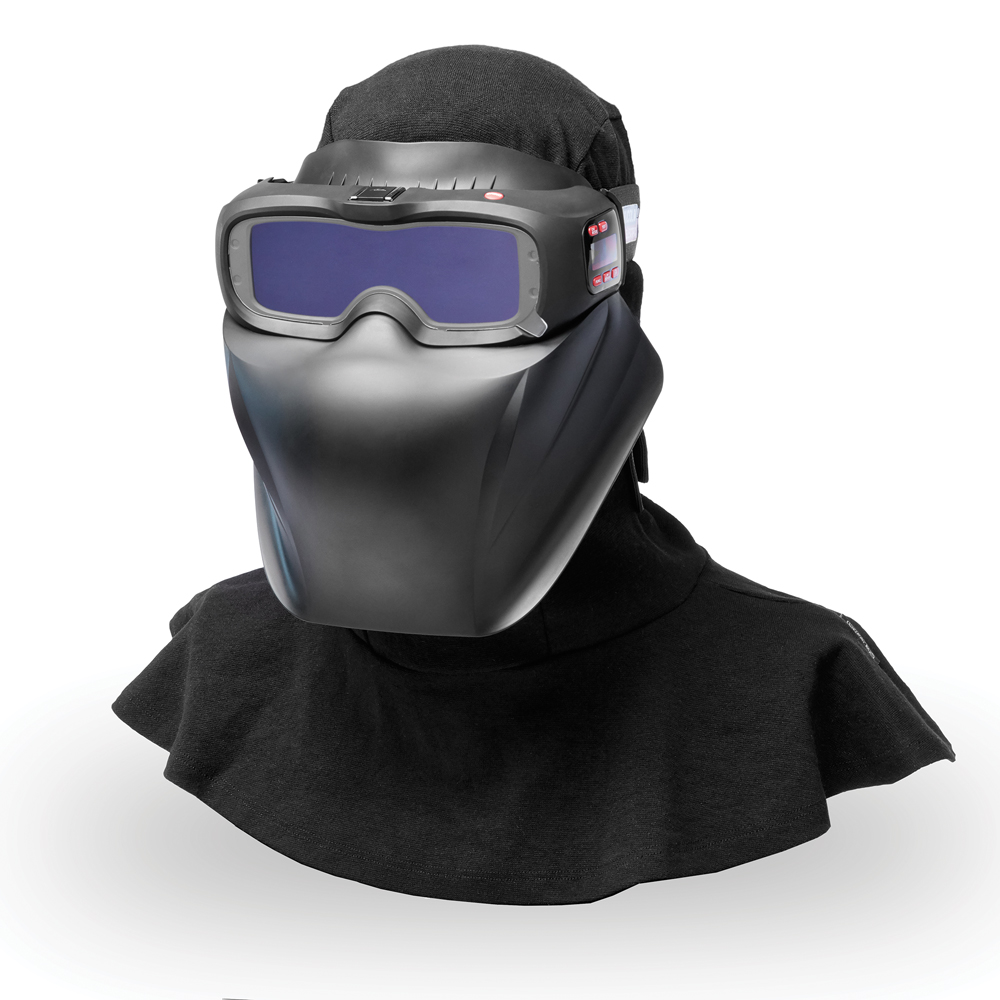
Perhaps the most adventurous product in this category is the ArcSpecs head covering from Lincoln Electric. It features LED-equipped welding goggles, impact-resistant face guard and fire-resistant cloth balaclava.
“One of the primary industry applications that we developed this product for was automotive,” said Rutti. “It has a much different form factor than a traditional welding helmet. It really lends itself to low profile and is unique in welding environments, such as an automotive roll cage. Oftentimes, a standard welding helmet just won’t fit. This is a much lower profile, and also a lighter weight. Another unique aspect is a modular LED light that attaches to the top of the goggles. It is separately powered and has an auto mode. When the welding starts, the light automatically turns off.”
Extras
Many of the sources from the manufacturers interviewed offer additional products designed to protect users in automotive or racing situations. For painters, SAS has polypropylene coveralls designed to breathe more and reduce heat stress while protecting against dry particulates and solvent-based paints. The company also has a diverse range of respirators.
For welders, Lincoln Electric has a line of caps, bandanas, and beanies that protect the head from hot splatters and provide comfort when the helmet is in place. Style is also important for those shopping this product category as the different designs can make a personal statement.
“We’ve continued to broaden some of the patterns,” said Rutti. “We definitely see individuals trying to express interests, whether it’s from a genre, things that they value, or just things that they think look good.”
SOURCES
Atlantic Safety Products
atlanticsafetyproducts.com
Defiant Metal
defiantmetal.com
Goodson Tools and Supplies
goodson.com
InEarz Sport
inearzsport.com
IsoTunes
isotunes.com
Lincoln Electric
lincolnelectric.com
SAS Safety Corp.
sassafety.com
Southern Adrenaline
southernadrenaline.net
 MEMBERSHIP LOGIN
MEMBERSHIP LOGIN JOIN PRI
JOIN PRI


